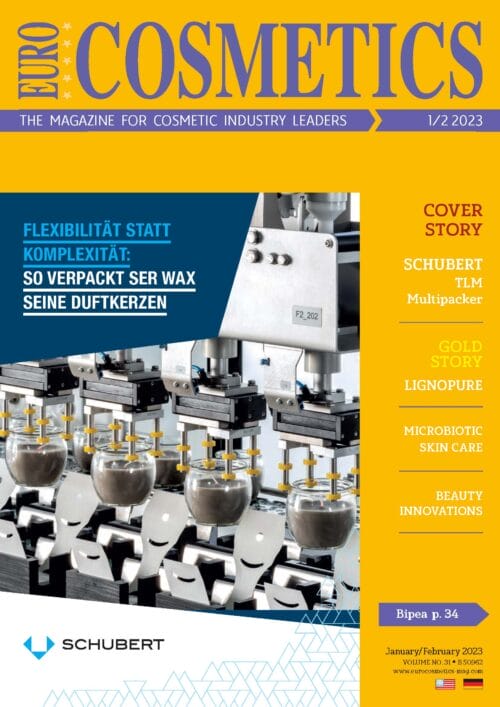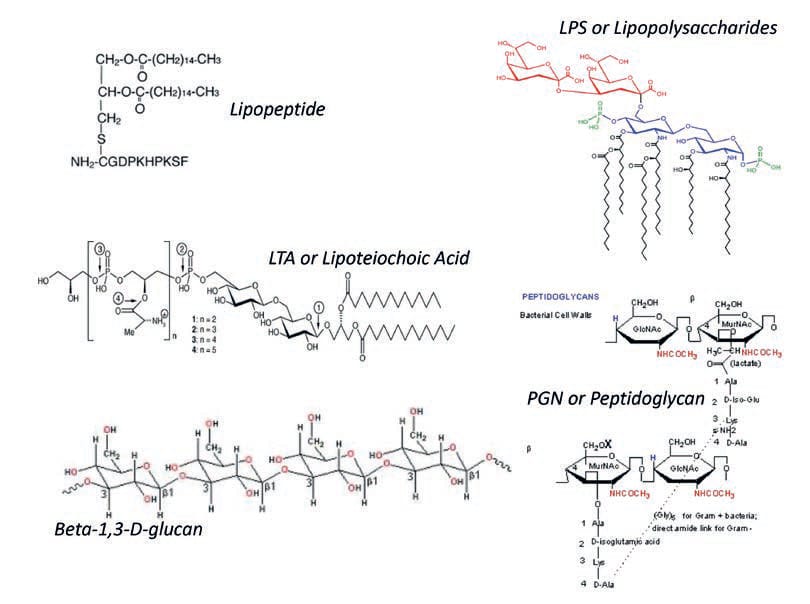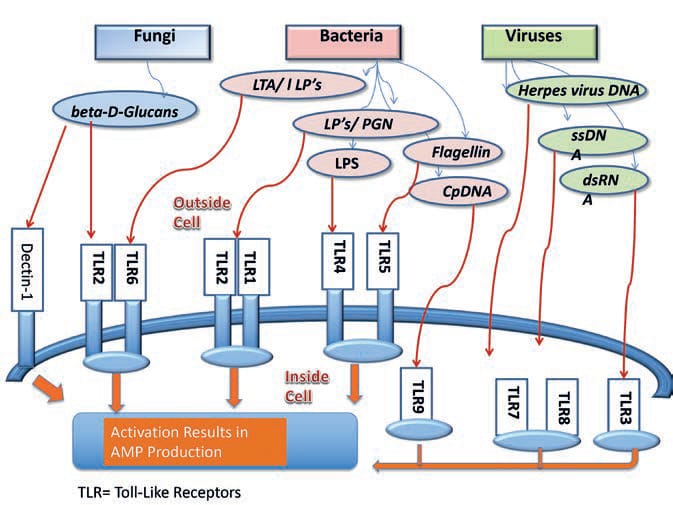
Introduction
Interaction with the Microbiome and millions of years of evolution has worked together to produce a very powerful and elegant mammalian immune system. Probiotic derived ingredients and probiotic mimicking agents are offering new methods to help maintain that system. Probiotic products are generally regarded as containing live organisms. The inclusion of ingredients derived from probiotic organisms into skincare formulations has been increasing for many years. However, the exact mode of action of many of these ingredients was poorly understood. The “Glucan Glow” was used in marketing without any references to mode of action or the activity level of the beta-D-glucan. The beta-D-glucans are ubiquitous in the plant kingdom. The common sources commercially used include yeasts, mushrooms, fungi and even bacteria in some cases. In almost all cases these are powders isolated from the organism or the grown organism itself.
Glucans, the oral ones need help to work on skin
Many of these beta-D-glucan sources, suitable for oral ingestion, must be activated for optimizing the glucan for topical use. This activation normally occurs during the digestion process. This is necessary because many beta 1,3-D-Glucans glucans often “hidden” by other molecular types in the actual living organism and require being processed to certain molecular weights and/or particle sizes optimized for topical activity. What exactly to expose these structures to the immuno-active process. Not only exposing the molecular weight and distribution. Even now this is a “trial and error” process to optimize. However, the final results from this “natural and beneficial” process without inflammation-critical factor-are worth the effort.
In the last 20 years the biological mechanisms of action have been elucidated. Even the living Probiotic systems function because of the molecular components they are made of. These components by complexing with a family of receptors on all epithelial cells, mobile immune cells and keratinocytes trigger positive biological results. These receptors are the literal “heart” of the immune system. These epithelial or keratinocyte cells, coated with special receptors, makeup the surface-lining of the digestive tract, vasculature, respiratory tract and skin-any surface exposed to our external environment.
The skin’s sentinels always on guard
These particular cells all possess a group of unique receptors; the Pattern recognition receptors (PRRs). A sub-group within this family of detectors is the PAMP receptors, “pathogen associated molecular pattern” receptors. These include Dectin-1 and toll-like receptors (TLRs). There are at presently 11 known TLRs on either the surface or interior of keratinocytes, epithelial and mobile immune cells. Each TLR has a type or class natural foreign molecules associated with bacteria, yeasts, molds and viruses which act as toll-like receptor agonists or stimulants (see Figure 1).

Dectin-1 and at least two TLRs have been cited in the literature as being involved in detecting / responding to beta-D-1,3-glucans1.
These PAMP receptors in turn cause keratinocytes, epithelial cells and immune cells to express the genes to produce various cytokines including the antimicrobial peptides (AMPs) of the innate immune system as well as directly activate the cellular components of the innate system, assuming a strong enough stimulant. The AMPs up regulated can include LL37 and the beta-defensins (Figure 2).

These in turn have been determined to also initiate growth factor production2, a key to why probiotics, through activation of Dectin-1 and TLRs, can cause enhanced cell turnover as well as increase keratin and collagen production.
The dramatic increase in understanding of biological processes, by scientists including those in the skincare industry has occurred. At least in part because of new analytical techniques available and improvements in in vitro cell culture techniques. Foremost of these has been Polymerase Chain Reaction (PCR) assay. Yes, this also has allowed easy COVID-19 testing.
The last decade a group of ingredients called lipopeptides has commercially become available with proliferative properties and reported3 to function as TLR agonists or stimulants. These ingredients had a similar mode of action yet very different chemistry that the beta-D-glucans. These were a complex family of oligopeptide fragments with lipid arms attached.
The epithelial cells “see” with their TLR receptors
As with the beta-D-glucans, potential pathogens can also produce these lipo-oligopeptides (LOPs)-so the immune system developed sensors to “see” these molecules as well. Researchers have shown these LOPs such as PAM2 or PAM3-Cys-SKKKK are potent TLR agonists (stimulants) and can form nanoparticles4. These are capable of activating TLRs at very low concentrations without activating the intracellular inflammazome resulting in procaspase activation resulting in interleukin 1b (IL1B), a primary cause of irritation.
The LOPs mentioned were studied extensively providing a basis for understanding the complex interaction of pro-biotic derived molecules with PAMP receptors. These molecules are available commercially in research quantities and are very useful as a standard by which to determine bioactivity of new TLR agonist candidates.
The commercial availability of these probiotic mimicking naturally derived molecules has allowed their use as anti-microbials, anti-acne, wound healing and hair growth stimulants. These turn out to be very related in certain aspects. The basal layer of the skin contains stem cells as does the dermal papilla of the hair follicles. The initial TLR stimulant process up-regulates genes which in turn up-regulate the AMPs (Figure #2); obviously these are useful for anti-microbial and anti-acne formulations. Stimulating the bodies natural defenses to attack or prevent pathological bacterial activity. The AMPs are powerful naturally occurring antibiotics –that’s their main job in life.
How does a cell doing guard duty stimulate eyelash growth?
Of course this brings us to the next real question, “how does triggering AMPs produced enhanced eyelash growth rates?“ A lesser known, but equally important role in the life of PAMP receptors, especially the TLRs, is the boosting of local critical growth factor (GF) production. GF genes such as FGF2, FGF7, TGFA, TGFB1, EGF etc., all of which can be produced by keratinocytes or other TLR containing cell types; are critical for wound healing and youthful skin rejuvenation processes. Yes I finally connected the dots.
TLR stimulants at work … Peptides stimulating hair growth around wounds
A family of these LOPs are produced by Therapeutic Peptides Inc. under various patents5 and are distributed by Symrise Inc. The Sympeptides are useful for eyelash growth enhancement as well as augmenting anti-acne and bioactive anti-aging formulations. Early investigations found it difficult to explain the bioactivity of these LOPs at such low concentrations – TLR agonists work at the several parts per million level or less.
As stated earlier, numerous molecules with a very different chemical structure than the beta-d-glucans can be PAMP/ TLR stimulants (Figure #1). This is logical as there are many molecular types within or on pathogens not found in human beings. PAMPs are capable of sensing all these very different structures-it is understandable the need for numerous PAMPs such as the different TLRs (figure #2).
Humans categorize their immune system as divided into the innate and acquired. The innate is functional at all times with the acquired being called in when needed-an infection has a taken foothold. The innate/acquired immune system was designed to eliminate foreign “particles” and pathogens via both chemical and cellular processes. Hopefully in most cases prior to significant infectivity and disease is realized.
Thus, the epithelial cell surfaces play a critical role in the first line of defense as does the members of the mobile immune system and the epithelial cells themselves as producing both killer molecules as well as initiating changes in the mobile immune cells to produce more of these molecules as they move towards the infection. The TLRs of the innate immune system are a key to the recognition of molecules from all foreign sources. They do not require ever having “seen” the molecule. This is especially useful in preventing viral infections buy prevention of the initial docking and virus entry process.
The magic “goldilocks region”; not too hot and not too cold – the balance between stimulation and irritation
In addition to TLRs the inflammazome (INFZs) is another cellular structure that can sense not only foreign molecular structures as well. Together and with other receptors they constitute the pathogen associated molecular pattern (PAMP) receptors. Almost nothing gets by the PAMP receptors in skin. They are the basis of innate defensive immunity and play a critical role in acquired immunity as well. Innate immunity is functioning at some level at all times on all. Acquired immunity takes 9–11 days to get to effective levels and requires a stimulus.
In most of these cases we think the molecular components of innate immune system (i.e. such as LL37 and beta-defensins among others) literally prevent the infection before it occurs. This happens because the innate immune system’s molecular components prevented either the initial receptor attachment or initial replication or physically lysed the virion or bacterial capsule.
Stimulating the natural innate immune by the use of probiotics is of course a well-known practice generally associated with the critical epithelial cells of the gut in contact with a pro-biotic. Use of probiotics or TLR agonists/ stimulants for topical skin applications is receiving greater interest but is more difficult with an intact stratum corneum. However, the natural microbiome appears to function even with an intact SC. How is that happening?
Also why can certain microbiome organisms live just fine on skin, stimulate AMP production – yet do not trigger irritation – at least most of the time.
It appears to be all about greed. Microbiome organisms have learned what it takes to live in/on us and developed a symbiotic relationship. That means allowing our immune system to limit the regions they inhabit and the limit the molecular components they present to our immune system. When the human immune system becomes compromised that balance can be thrown off.
The good guys are symbiotic and generate immune “muscle” – the bad guys you either kill them or they kill you
Pathological species have no limits-even if it kills the host. Nor is there any attempt at crosstalk. Nature has spent 100’s of millions of years developing a system to prevent the very thing many of us in formulary development attempt to accomplish: getting bioactive plant extracts or other potential bioactive through an intact stratum corneum (SC).
For cosmetic delivery of bioactives, macroemulsions have been the work horse. However, for carrying collioidal beta-D-glucans or LOP TLR stimulants they are not suitable without modification. Macro-emulsion particle sizes are simply too large to take their cargo where it needs to be to optimize results.
Many natural probiotic TLR stimulants, even with special processing techniques, are difficult to produce sub-micron particles. The small molecule TLR stimulants are indeed easier to achieve dermal penetration. However, have other issues because of their bio-surfactant properties. Conventional liposomes with their aqueous cores and generally larger size have penetration / stability issues; as do the newer “exosome” type formulations.
Another delivery option for both types of TLR agonists has been the sub-micron nano-emulsions. These possess excellent penetration when combined with sub-micron colloids or soluble TLR agonists. Nature’s version of the nano-emulsion is the chylomicron ( ). We generally now refer to them as low/high density lipoproteins or LDLs and HDLs – the “protein” part of lipoprotein refers to the complex protein macromolecules used to stabilize the phospholipid coated lipid particle.
Same old issue if you can’t get it where it needs to be it’s a practical failure
Very few companies to date have developed naturally based sub-micron nano-emulsion technologies combined colloidal or receptor specific bioactives which have the ability to get to the appropriate PAMP receptors without initiating a negative response. The use of TLR stimulating nanoemulsions capable of being adde to macro-emulsion formulations offers a promise of “having your cake and eating it too”.
The human immune system was intentionally designed to see living microorganisms, or parts of dead microorganisms – and react. As stated many of us have used selected probiotic derivatives such as the beta-D-glucans for years without knowledge of exact mechanisms. The natural microbiome can also function quite well without causing inflammation – activation of the INFZs. This occurs just by TLR activation-without the inflammazome (INFZ) triggering inflammation. Selectively turning on the TLRs to produce a family of constitutive (antimicrobial peptides AMPs) without also stimulating the INFZs, is a neat trick. Microbiome organisms such as Staph. Epidermitis do it all the time by producing molecular debris which includes TLR agonists which stimulate AMP production-but just the right amount. We are learning to augment that processc as well.
Early research PCR assay results made it necessary to re-define the term ”bioactive” to any ingredient or process that alters cellular gene expression. As it turned out the more we looked; almost everything was “bioactive” at some concentration. The question is really what is the net effect: positive or negative at a given concentration? The PCR assay combined with in vitro cell culture allows large and medium sized companies with properly funded laboratories to suddenly be able to look at fundamental cellular processes and determine what indeed is both positive in the “bioactive” sense as well as safe to use.
References
- Desamero,M.J.M.;Chung, S.-H.; Kakuta, S. “Insights on the Functional Role of Beta-Glucans in Fungal Immunity Using Receptor-Deficient Mouse Models”, Int. J. Mol. Sci.2021, 22, 4778.
- Mata-Martínez P, Bergón-Gutiérrez M and del Fresno C (2022) “Dectin-1 Signaling Update: New Perspectives for Trained Immunity”, Front. Immunol. 13:812148. doi: 10.3389/fimmu.2022.812148
- Vaibhav B. Shah, David L. Williams, and Lakhu Keshvara,” b-Glucan attenuates TLR2- and TLR4-mediated cytokine production by microglia”, Neurosci Lett. 2009 July 24; 458(3): 111–115. doi:10.1016/j.neulet.2009.04.039.
- Ian W. Hamley, Steven Kirkham, Ashkan Dehsorkhi, Valeria Castelletto, Mehedi Reza and Janne Ruokolainen, “Toll-like receptor agonist lipopeptides self-assemble into distinct nanostructures”, Chem. Commun., 2014, 50, 15948
- Sato M, Sano H, Iwaki D, KudoK, Konishi M, Takahashi H, et al.”Direct binding of Toll-like receptor 2 to zymosan, and zymosan- induced NF-kappa B activation and TNF-alpha secretion are 45. down-regulated by lung collectin surfactant protein” A. J Immunol (2003) 171:417–25.
- Guerrero AT, Cunha TM, Verri WA Jr., Gazzinelli RT, TeixeirMM, Cunha FQ, et al. “Toll-.like receptor 2/MyD88 signaling mediates zymosan-induced joint hypernociception in mic e: participation of TNF-alpha, IL-1betaand CXCL1/KC”, Eur J Pharma-col (2012674:51–doi:10.1016/ j.ejphar.2011.10.023
- Dosunmu EF, Emeh RO, Dixit S, Bakeer MK, Coats MT, Owen DR, et al. (2017) “The anti- microbial peptide TP359 attenuates inflammation in human lung cells infected with Pseudomonas aeruginosa via TLR5 and MAPK pathways” PLOS ONE 12(5): e0176640. https://doi.org/10.1371/ journal.pone.0176640
- US 8,586,541 Polymeric biosurfactants, US 8,431,523 Oligomeric biosurfactants in dermatocosmetic compositions, US 7,381,704 Methods for use of short bioactive peptides US 7,354,903 Cosmetic compositions containing short bioactive peptides, US 6,875,744 Short bioactive peptides



